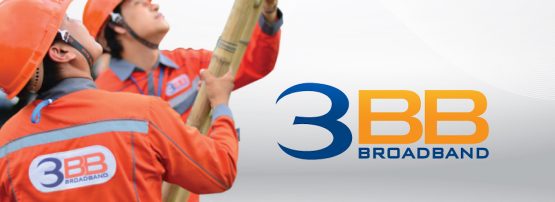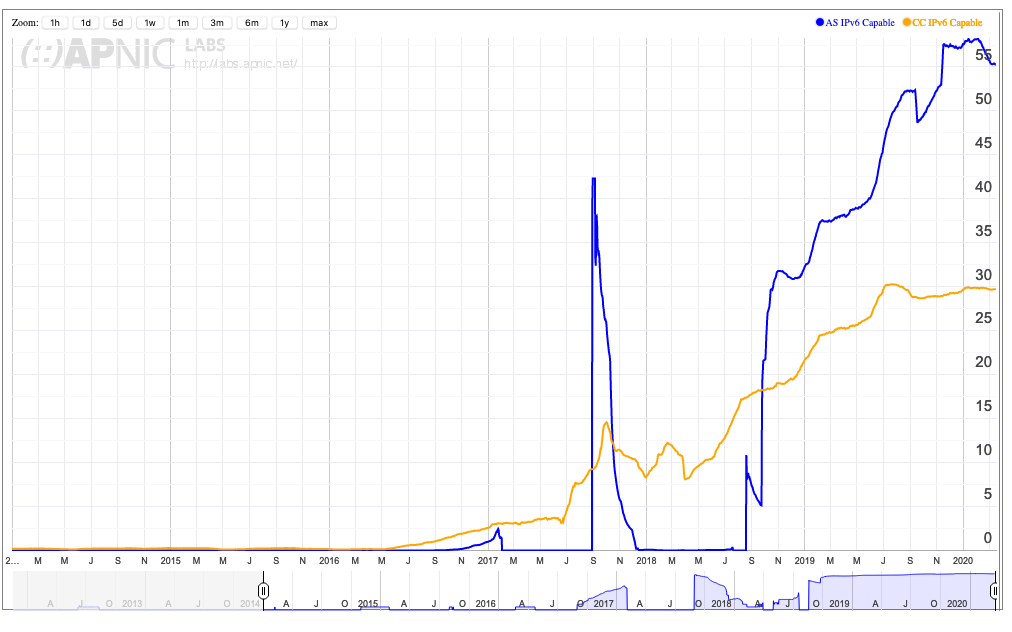
Since the start of 2017, IPv6 capability in Thailand has increased from around 2% to 30% thanks largely to the efforts of two of the economy’s largest Internet Service Providers — Advanced Info Service (AIS) and Triple T Broadband (3BB).
Having featured the former’s efforts in a previous case study, we turn to the latter’s accomplishments in this post to understand the reasoning, deployment strategy and challenges behind 3BB’s successful deployment.
A subsidiary of Jasmine International, 3BB began offering ADSL services in Thailand’s major cities in 2009. A year later it applied for a /32 setting in motion a six-year strategy to deploy IPv6.
“On receiving our IPv6 allocation in 2010 we started to plan how we would deploy it. This included understanding what transition technology we’d use and taking stock of the various parts of the network that would require upgrading and testing to be IPv6 capable,” says Matis Angkasuvan, who oversaw the project.
Like many early adopters, 3BB chose dual-stack with IPv4 NAT as a transition mechanism, a choice that Matis said came down to it being “flexible and least impactful on customers”.

“Deploying dual-stack meant we didn’t have to totally overhaul our network, as most of our core network equipment was already IPv6 capable,” says Matis.
“More so, it allowed us to still enable our customers to access a lot of local websites and services which do not as yet support IPv6.”
| wdt_ID | Alexa Rank | Website | AAAA Record | AAAA Record for www. Site | Site returns IPv6 source address | www. Site returns IPv6 source address |
|---|---|---|---|---|---|---|
| 1 | 1 | Google.com | ✓ | ✓ | ✓ | ✓ |
| 2 | 2 | YouTube.com | ✓ | ✓ | ✓ | ✓ |
| 3 | 3 | Facebook.com | ✓ | ✓ | ✓ | ✓ |
| 4 | 4 | Baidu.com | x | x | - | - |
| 5 | 5 | Wikipedia.org | ✓ | ✓ | ✓* | ✓* |
| 6 | 6 | Qq.com | x | ✓ | - | ✓* |
| 7 | 7 | Tmall.com | x | x | - | - |
| 8 | 8 | Taobao.com | x | x | - | - |
| 9 | 9 | Yahoo.com | ✓ | ✓ | ✓ | ✓ |
| 10 | 10 | Amazon.com | x | x | - | - |
Table 1 — IPv6 status for top 20 websites worldwide (6connect, Nov 2019)
Although 3BB was able to get IPv6 deployed on its core within a year, Matis says the wait for making it available to customers was down to the need to test applications and systems across the network as well as customer-premises equipment (CPE) for IPv6 capabilities.
“3BB prides itself on its quality of service for its customers and we needed to guarantee that the upgrades would not create problems for our customers,” says Matis.
“Almost every step of the process required testing and an understanding of how it would affect associated systems. Everyone from the engineers and vendors to the support team and helpdesk needed to learn about and troubleshoot issues that might arise from the deployment.” Matis notes the assistance from vendors as well as internal trainers was vital in this phase.
Finally, 3BB reached a point where they were happy with the changes and by mid-2016 started offering IPv6 to its customers. There were some small issues in the beginning with some applications and devices not working over IPv6 but Matis says this is inevitable with any significant upgrade to a network.

“There were problems with the equipment in some areas of the network being incompatible and incomplete because of our legacy servers. Sometimes we use a proxy device to overcome this until we purchase new servers that will be sure to support IPv6.
“Other than this our core is fully IPv6 capable and roughly 20% of our customers’ CPEs still don’t support IPv6, which is a challenge. But, overall, we’ve been happy with how the deployment has happened.
“It’s reduced our projected cost of operation — specifically our investment in NAT equipment — and sets up our business to accommodate not only customer growth but the future technologies that will benefit from having point-to-point connectivity, including the Internet of Things.”
Timeline:
| 2010 | 3BB receives a /32 from APNIC |
| 2011 | 3BB begins planning its IPv6 deployment, choosing dual-stack as a preferred transition technology. |
| 2012-2016 | 3BB deploys IPv6 on its core network Testing of applications and services for IPv6 capabilities and support Completed training |
| 2016 | IPv6 capability in Thailand is 0% (January) 3BB makes IPv6 available to its customers |
| 2017 | IPv6 capability in Thailand is 2.8% (Jan) |
| 2018 | IPv6 capability in Thailand is 8% (Jan) |
| 2019 | IPv6 capability in Thailand is 24% (Jan) 80% of 3BB’s broadband customers have access to IPv6 |
| 2020 | IPv6 capability in Thailand is 30% (Jan) |
The views expressed by the authors of this blog are their own and do not necessarily reflect the views of APNIC. Please note a Code of Conduct applies to this blog.

Dear staff,
I am very curious to change at IPv6 capability, but I am still on IPv4 with the 3BB fiber optic Mesh package.
Is there also any news about WiFi 6 for this year or next year at 3 BB?
When may I see an upgrade to IPv6 in my Village near Renu Nakhon (48170), Nakhon Phanom province?
Respectfully,
Mr. Dutchie
I didn’t get any response upon my question, so I will try it again……………
Dear staff,
I am very curious to change at IPv6 capability, but I am still on IPv4 with the 3BB fiber optic Mesh package.
Is there also any news about WiFi 6 for this year or next year at 3 BB?
When may I see an upgrade to IPv6 in my Village near Renu Nakhon (48170), Nakhon Phanom province?
Respectfully,
Mr. Dutchie
Dear Mr Dutchie,
Can I recommend you contact your ISP directly? You might be more likely to get a response.
Kind regards
Siena
Dear staff,
I was hoping on a answer from your blog, because the 3 BB Internet provider doesn’t understand my question!
So please, give me some information.
Best regards,
Mr. Dutchie
It should be: I was hoping for an answer…….
Sorry, my mistake.